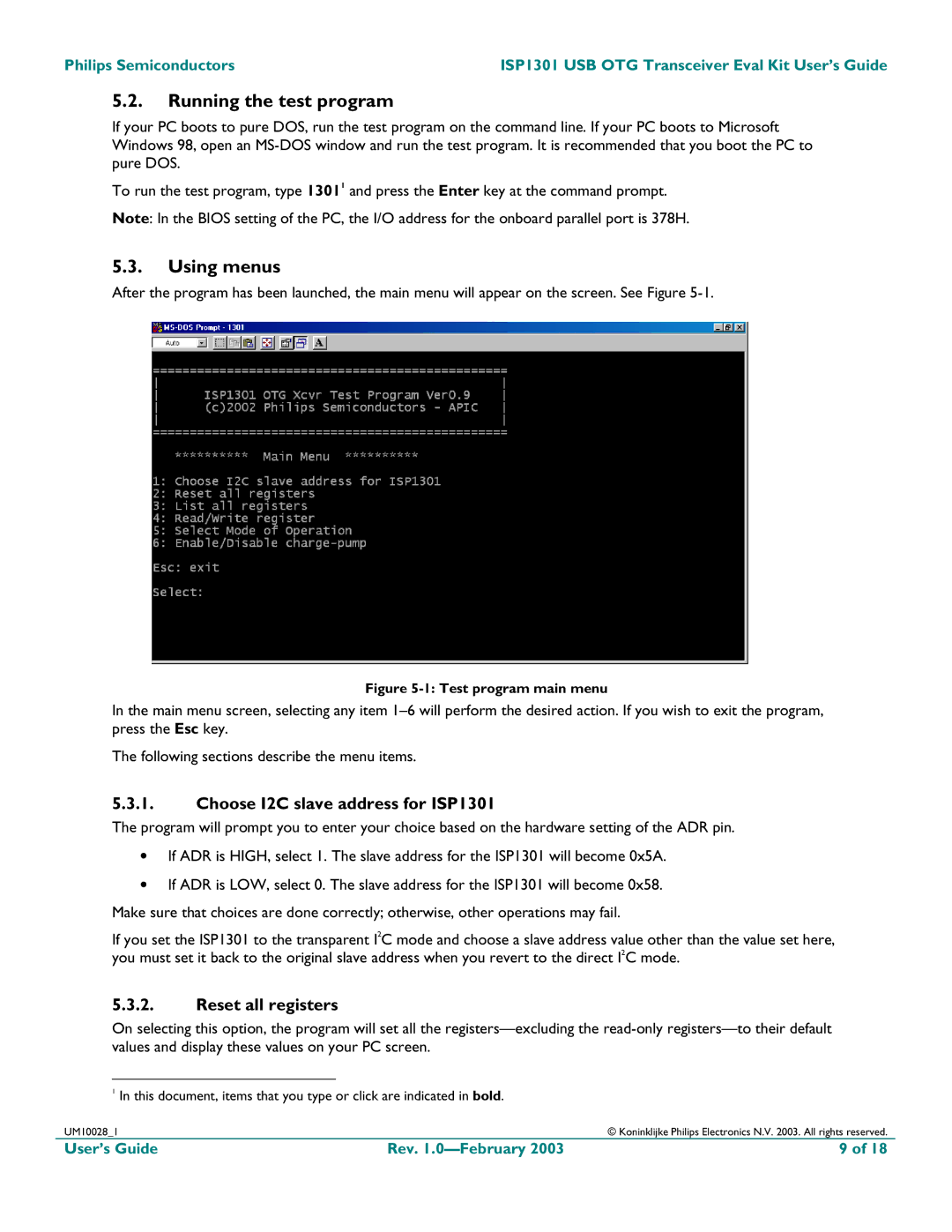
Philips Semiconductors | ISP1301 USB OTG Transceiver Eval Kit User’s Guide |
5.2.Running the test program
If your PC boots to pure DOS, run the test program on the command line. If your PC boots to Microsoft Windows 98, open an
To run the test program, type 13011 and press the Enter key at the command prompt.
Note: In the BIOS setting of the PC, the I/O address for the onboard parallel port is 378H.
5.3.Using menus
After the program has been launched, the main menu will appear on the screen. See Figure
Figure 5-1: Test program main menu
In the main menu screen, selecting any item
The following sections describe the menu items.
5.3.1.Choose I2C slave address for ISP1301
The program will prompt you to enter your choice based on the hardware setting of the ADR pin.
•If ADR is HIGH, select 1. The slave address for the ISP1301 will become 0x5A.
•If ADR is LOW, select 0. The slave address for the ISP1301 will become 0x58. Make sure that choices are done correctly; otherwise, other operations may fail.
If you set the ISP1301 to the transparent I2C mode and choose a slave address value other than the value set here, you must set it back to the original slave address when you revert to the direct I2C mode.
5.3.2.Reset all registers
On selecting this option, the program will set all the
1In this document, items that you type or click are indicated in bold.
UM10028_1
© Koninklijke Philips Electronics N.V. 2003. All rights reserved.
User’s Guide | Rev. | 9 of 18 |
